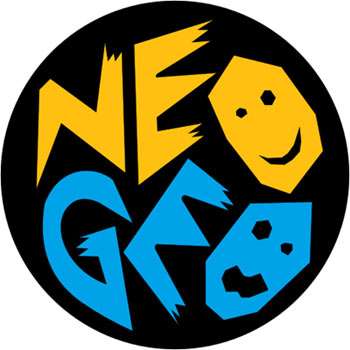Neo Geo

Neo Geo, Neo Geo. Four bright buttons and two joysticks
Neo Geo, Neo Geo. Cool red cab and a name that sticks.—Keith Apicary, Four Bright Buttons & Two Joysticks
In the late 1980s, SNK developed an arcade system that could work with multiple games. They called it the Multiple Video System. It used cartridges, like a game console. A home version was the logical extension, and thus was born the Neo Geo Advanced Entertainment System. The MVS itself turned out to be the longest-lived arcade hardware of its kind, outlasting Nintendo's VS. hardware by several years.
However, arcade machines cost a lot more than home consoles, and SNK knew that. At first, it was a luxury item for rent in hotels. When guests started letting the company know they'd be willing to buy them, SNK decided to put it on sale. The Neo Geo was released to the general public in January 1990.
The cost was high, not just for the processing power, but for the joysticks and games. The games cost about $200, partly because their size was comparable to N64 carts and partly because of their architecture — the RAM chips needed to play the game were built into the cart rather than in the system. The system launched in the US, with two controllers and the game Magician Lord, at $650. Just a bit later, a bundle with no game and one controller sold for $400. In an attempt to cut the price, SNK released the Neo-Geo CD in 1994. It was $300, and games were $50, but with a 1x CD-ROM drive it fell victim to Loads and Loads of Loading.
The price of the system and games meant the mainstream was out of the question, so SNK went for Up Marketing to appeal to hardcore gamers, who actively embraced the system just as they would the Sega Dreamcast a few years later. This had some initial success, but unfortunately that cost didn't go to proper anti-piracy measures, and the system was rife with it. SNK blamed that as a major factor in their bankruptcy in 2000, though the Neo-Geo managed to not only survive their collapse but last long enough to see their reconstitution as SNK Playmore.
The final Neo-Geo game, Samurai Shodown 5 Special, was released in 2004. But the Neo-Geo lives on, with collectors and some people are making homebrew games for it years after the system was discontinued.
Not to be confused with the Geo sub-marque of Chevrolet that existed at about the same time as the Neo-Geo's heyday.
Specifications:
- Motorola 68000 CPU, 12 MHz.
- Z80 co-processor, 4 MHz, partly used for audio control, although there is a separate sound chip.
- 64K main memory.
- 74K total Video RAM: 64K screen/sprite memory, plus 8K for the color palette and 2K of high-speed VRAM.
- 2K audio memory.
- Cart sizes could be 41.25 MB (330 megabits) without bank switching, and 89.5 MB (716 megabits) with it. Keep in mind this was a system made in 1990, so that was a hell of a lot.
- Sprites could be up to 16x512.
- Up to 384 sprites on-screen.
- All that extra video memory and sprite power is needed, as the system doesn't use tiled backgrounds. They're all sprites done as strips instead of squares (hence the long sprite size).
- 320x224 resolution.
- 4096 out of 65,536 colors.
In short, this was a beast. It took until the PlayStation for a stronger system to come out for less than $400, and even that was primarily made for 3D. There wasn't a dedicated 2D system to surpass it until the Game Boy Advance, coming out just over ten years later.
Games:
- Aero Fighters (known in Japan as Sonic Wings)
- Aggressors of Dark Kombat
- Art of Fighting
- Blue's Journey
- Cyber-Lip
- Double Dragon
- Fatal Fury
- Kabuki Klash
- Karnov's Revenge (known in Japan as Fighter's History Dynamite)
- The King of Fighters
- King of the Monsters
- Last Resort
- Legend of Success Joe
- Magical Drop
- Magician Lord
- Metal Slug
- Neo Bomberman
- Neo Mr. Do
- Power Instinct Matrimelee
- Prehistoric Isle 2
- Pulstar and Blazing Star
- Puzzle Bobble
- Rage of the Dragons
- Robo Army
- Samurai Shodown
- Savage Reign and Kizuna Encounter
- Sengoku
- Shock Troopers
- SNK vs. Capcom: SVC Chaos
- Spinmaster
- Strikers 1945 PLUS
- Super Dodge Ball
- Super Sidekicks
- The Last Blade
- Tecmo World Soccer '96
- Twinkle Star Sprites
- Voltage Fighter Gowcaizer
- Waku Waku 7
- World Heroes
- Zed Blade